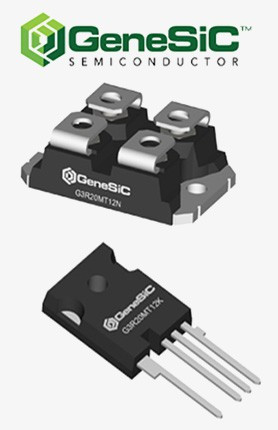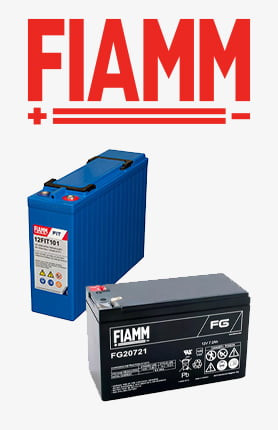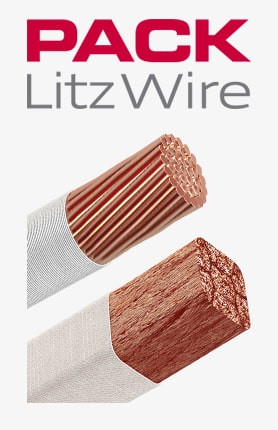Musíte být přihlášen
-
WróćX
-
Komponenty
-
-
Category
-
Polovodiče
- LED diody
- Tyristory
- Elektroizolační moduly
- Přemosťovací usměrňovače
-
Tranzistory
- Tranzistory | GeneSiC
- SiC MOSFET moduly | Mitsubishi
- SiC MOSFET moduly | STARPOWER
- Moduly ABB SiC MOSFET
- Moduly IGBT | MITSUBISHI
- Tranzistorové moduly | MITSUBISHI
- Moduly MOSFET | MITSUBISHI
- Tranzistorové moduly | ABB
- Moduly IGBT | POWEREX
- Moduly IGBT | INFINEON (EUPEC)
- Polovodičové prvky z karbidu křemíku (SiC)
- Przejdź do podkategorii
- Ovladače brány
- Bloky napájení
- Przejdź do podkategorii
- Měniče proudu a napětí LEM
-
Pasivní součásti (kondenzátory, rezistory, pojistky, filtry)
- Rezistory
-
Pojistky
- Miniaturní pojistky pro elektronické obvody řady ABC a AGC
- Trubkové rychle působící pojistky
- Pojistkové vložky s časovým zpožděním s charakteristikami GL / GG a AM
- Ultrarychlé pojistkové články
- Rychle působící pojistky (britský a americký standard)
- Rychle působící pojistky (evropský standard)
- Pojistky pojezdu
- Pojistkové vložky vysokého napětí
- Przejdź do podkategorii
-
Kondenzátory
- Motorové kondenzátory
- Elektrolytické kondenzátory
- Filmové kondenzátory
- Výkonové kondenzátory
- Kondenzátory pro stejnosměrné obvody
- Kondenzátory korekce účiníku
- Vysokonapěťové kondenzátory
- Indukční topné kondenzátory
- Kondenzátory pulsu a energie
- DC LINK kondenzátory
- Kondenzátory pro AC / DC obvody
- Przejdź do podkategorii
- EMI filtry
- Superkondenzátory
- Přepěťová ochrana
- Filtry pro odhalování emisí TEMPEST
- Svodič přepětí
- Przejdź do podkategorii
-
Relé a stykače
- Teorie relé a stykačů
- 3fázová střídavá polovodičová relé
- 3fázová střídavá polovodičová relé
- Regulátory, ovládací prvky a příslušenství
- Měkké spouštění a reverzační stykače
- Elektromechanická relé
- Stykače
- Otočné spínače
-
Jednofázová střídavá polovodičová relé
- Jednofázová střídavá polovodičová relé, 1 řada | D2425 | D2450
- Jednofázová střídavá polovodičová relé řady CWA a CWD
- Jednofázová střídavá polovodičová relé řady CMRA a CMRD
- Jednofázová střídavá polovodičová relé řady PS
- Dvojitá a čtyřnásobná střídavá polovodičová relé řady D24 D, TD24 Q, H12D48 D.
- Jednofázová polovodičová relé řady GN
- Jednofázová střídavá polovodičová relé řady CKR
- Jednofázová AC relé na lištu DIN řady ERDA A ERAA
- Jednofázová AC relé pro proud 150 A.
- Dvojitá polovodičová relé integrovaná s chladičem pro lištu DIN
- Przejdź do podkategorii
- Jednofázová AC polovodičová relé pro PCB
- Relé rozhraní
- Przejdź do podkategorii
- Jádra a další indukční součásti
- Radiátory, varistory, tepelné ochrany
- Fanoušci
- Klimatizace, příslušenství pro elektrické skříně, chladiče
-
Baterie, nabíječky, vyrovnávací zdroje a střídače
- Baterie, nabíječky - teoretický popis
- Lithium-iontové baterie. Vlastní baterie. Systém správy baterií (BMS)
- Baterie
- Nabíječky baterií a příslušenství
- Záložní zdroj UPS a vyrovnávací napájecí zdroje
- Převaděče a příslušenství pro fotovoltaiku
- Úschovna energie
- Palivové články
- Lithium-iontové baterie
- Przejdź do podkategorii
- Automatika
- Kabely, dráty, vodiče, flexibilní připojení
- Zobacz wszystkie kategorie
-
Polovodiče
-
-
- Suppliers
-
Applications
- AC a DC pohony (střídače)
- Automatizace HVAC
- CNC obráběcí stroje
- Energy bank
- Indukční ohřev
- Komponenty pro prostředí s nebezpečím výbuchu (EX)
- Měření a regulace teploty
- Měření a regulace teploty
- Motory a transformátory
- Napájecí zdroje (UPS) a usměrňovací systémy
- Průmyslová automatizace
- Průmyslová automatizace
- Průmyslová ochranná zařízení
- Stroje na sušení a zpracování dřeva
- Stroje na tvarování plastů za tepla
- Svařovací stroje a svářecí stroje
- Těžba, hutnictví a slévárenství
- Tisk
- Tramvajová a železniční trakce
- Zařízení pro distribuční, řídicí a telekomunikační skříně
-
Instalace
-
-
Induktory
-
-
Indukční zařízení
-
-
Servis
-
- Kontakt
- Zobacz wszystkie kategorie
Energy Efficiency in Industrial Air Conditioners

What Does “Energy-Efficient Industrial Air Conditioner” Mean?
Not every industrial air conditioner deserves to be called energy-efficient. This term refers to devices that provide the same (or better) cooling performance as older models while consuming less energy.
Key technical indicators:
- SEER (Seasonal Energy Efficiency Ratio) – seasonal energy efficiency ratio,
- EER (Energy Efficiency Ratio) – the ratio of cooling capacity to power consumption in nominal mode,
- COP (Coefficient of Performance) – energy efficiency in heating mode (if applicable).
It’s also worth paying attention to the energy class and power consumption in various operating modes – including standby.
Real Savings – How Much Can You Save?
Choosing an energy-efficient air conditioner directly impacts electricity bills. For example, an industrial unit with 1000 W cooling capacity may consume between 800 and 1200 W in continuous operation, depending on its design and efficiency.
Comparing devices with different EER values:
- Standard model (EER = 2.5): 1000 W cooling with 400 W consumption,
- Efficient model (EER = 4.0): 1000 W cooling with 250 W consumption.
Assuming 5,000 hours of operation per year, the energy consumption difference can amount to several thousand kWh, translating to savings of PLN 2,000–3,500 annually (at industrial energy rates).
Operating Modes That Affect Energy Consumption
Modern industrial air conditioners are equipped with various modes that optimize energy use based on operating conditions:
- ECO mode / Night mode – limits cooling output when automation systems are idle,
- Ambient temperature-based operation – dynamically adjusts cooling capacity to current conditions,
- Automatic switching – e.g., between active cooling and passive (free cooling) when outdoor temperatures allow,
- Inverter control – smooth compressor speed regulation, reducing peak power usage.
Such modes can reduce average annual energy consumption by 25–40%.
Smart Thermal Management
Cooling systems are no longer standalone units. Increasingly, they are part of integrated industrial infrastructure management:
- Temperature and humidity sensors – enable automatic cooling intensity adjustment,
- Adaptive management – algorithms that learn cabinet heating patterns and optimize compressor operation,
- Predictive cooling – based on temperature trends, the unit increases performance before critical thresholds are reached,
- Integration with SCADA and BMS systems – full control from supervisory systems, remote monitoring, energy usage reports, alerts.
These solutions help avoid excessive operation and maintain the ideal balance between cooling and energy savings.
Technologies Supporting Energy Efficiency
Energy efficiency is the result of a comprehensive design approach, which includes:
- EC fans (Electronically Commutated) – more efficient and quieter than traditional fans, with precise speed control,
- Cabinet thermal insulation – reduces external temperature impact,
- Heat recovery systems – in some applications, used to heat other system components,
- Automatic condenser temperature control – affects compressor load and energy consumption,
- Optimized airflow design – air ducts designed to reduce resistance and improve heat exchange efficiency.
All these elements not only reduce operational costs but also increase the lifespan of internal cabinet components.
Summary and Recommendations
Energy efficiency in industrial air conditioners is not just a buzzword – it brings real technical and financial benefits. Thanks to modern operating modes, thermal management systems, and efficient technologies, it is possible to:
- reduce energy consumption by up to 30–40%,
- extend the service life of automation devices,
- reduce service and downtime costs,
- achieve a fast return on investment.
Recommendation: when selecting an industrial air conditioner, consider not only cooling capacity but also energy efficiency and the ability to integrate with control systems. It’s an investment in lower bills, greater reliability, and sustainable development.
Související příspěvky
 Thermally conductive materials in power storages
Thermally conductive materials in power storages
 Measuring power and energy in electric circuits
Measuring power and energy in electric circuits
 Wentylatory przemysłowe - rodzaje, właściwości
Wentylatory przemysłowe - rodzaje, właściwości




Zanechat komentář